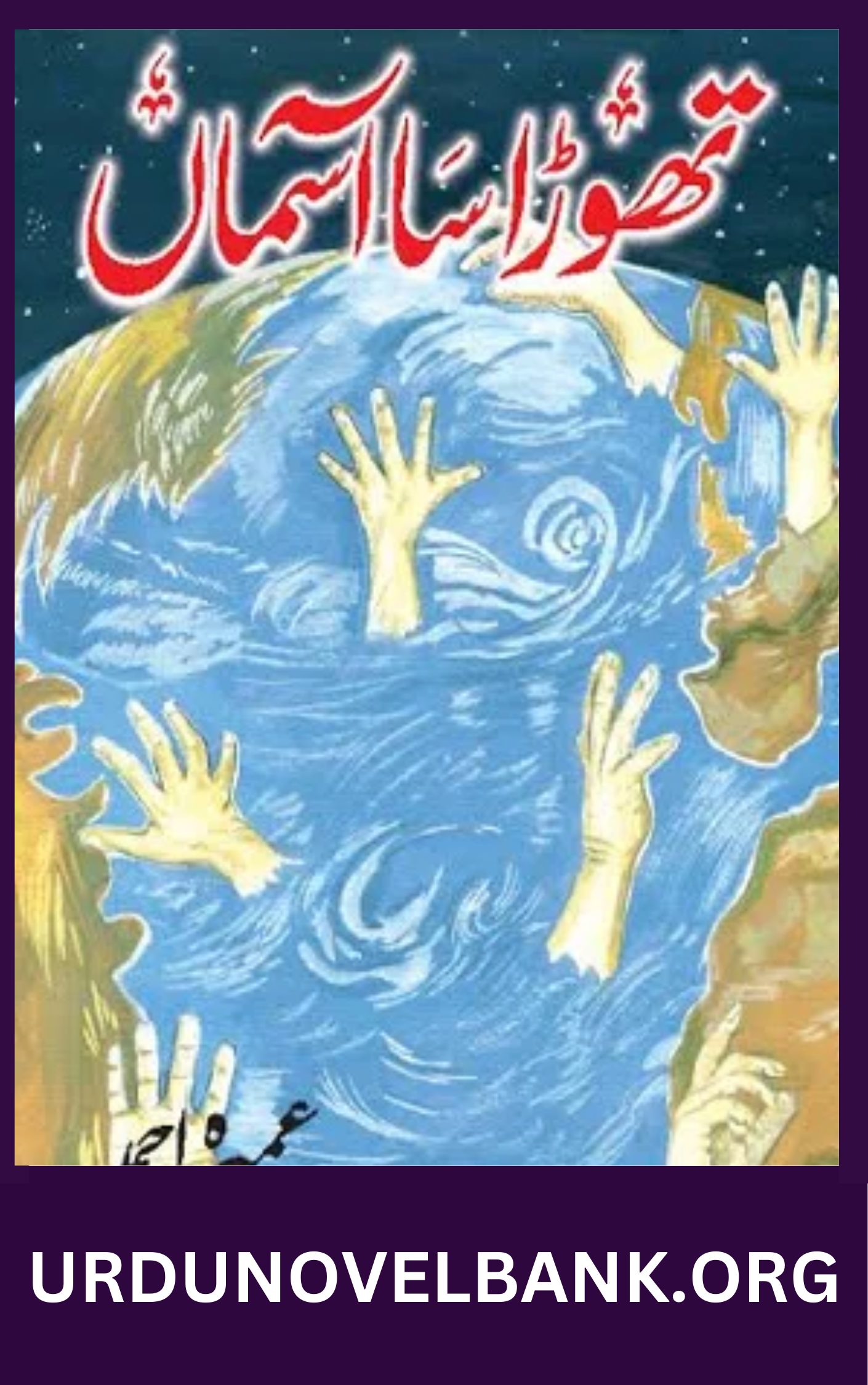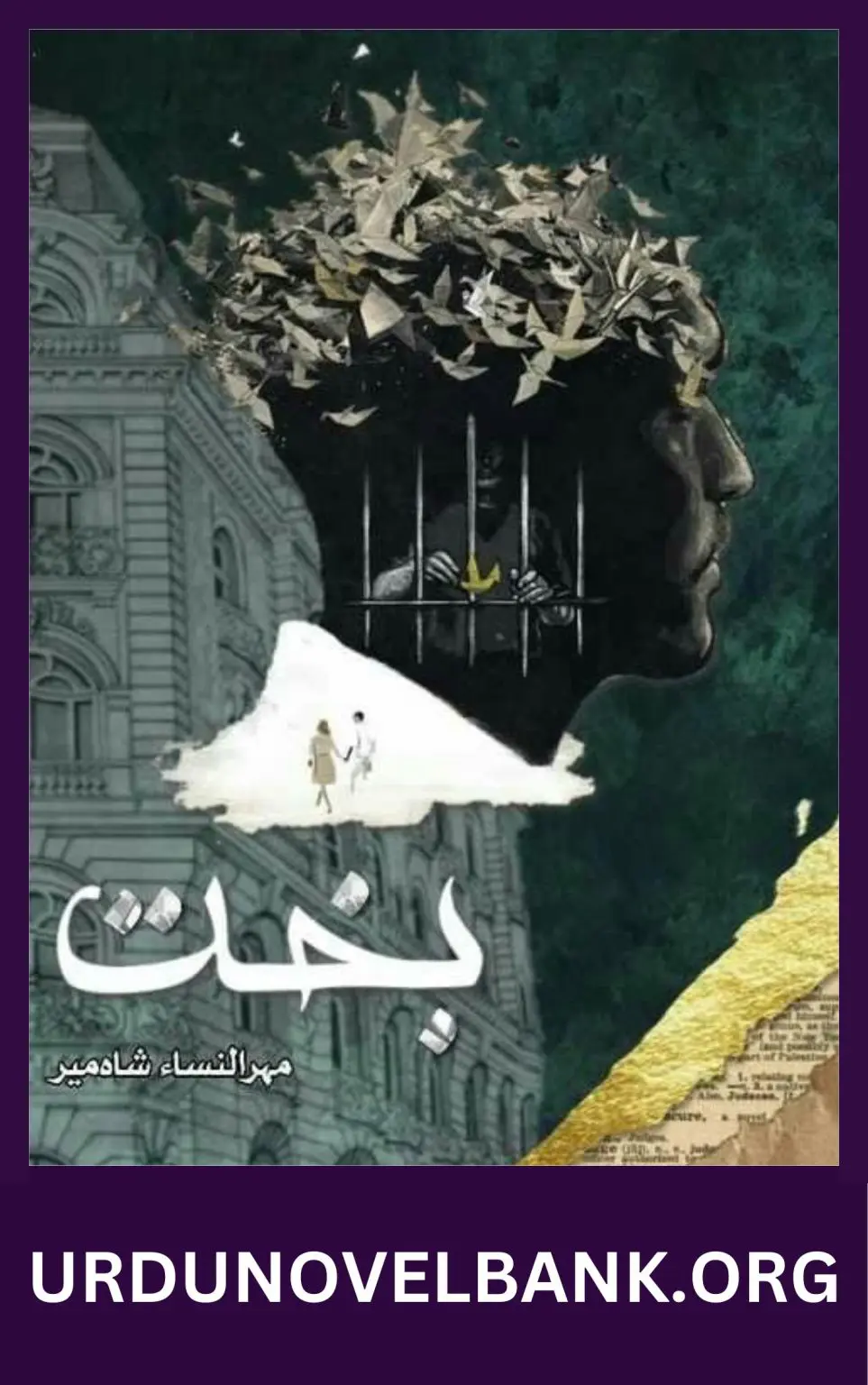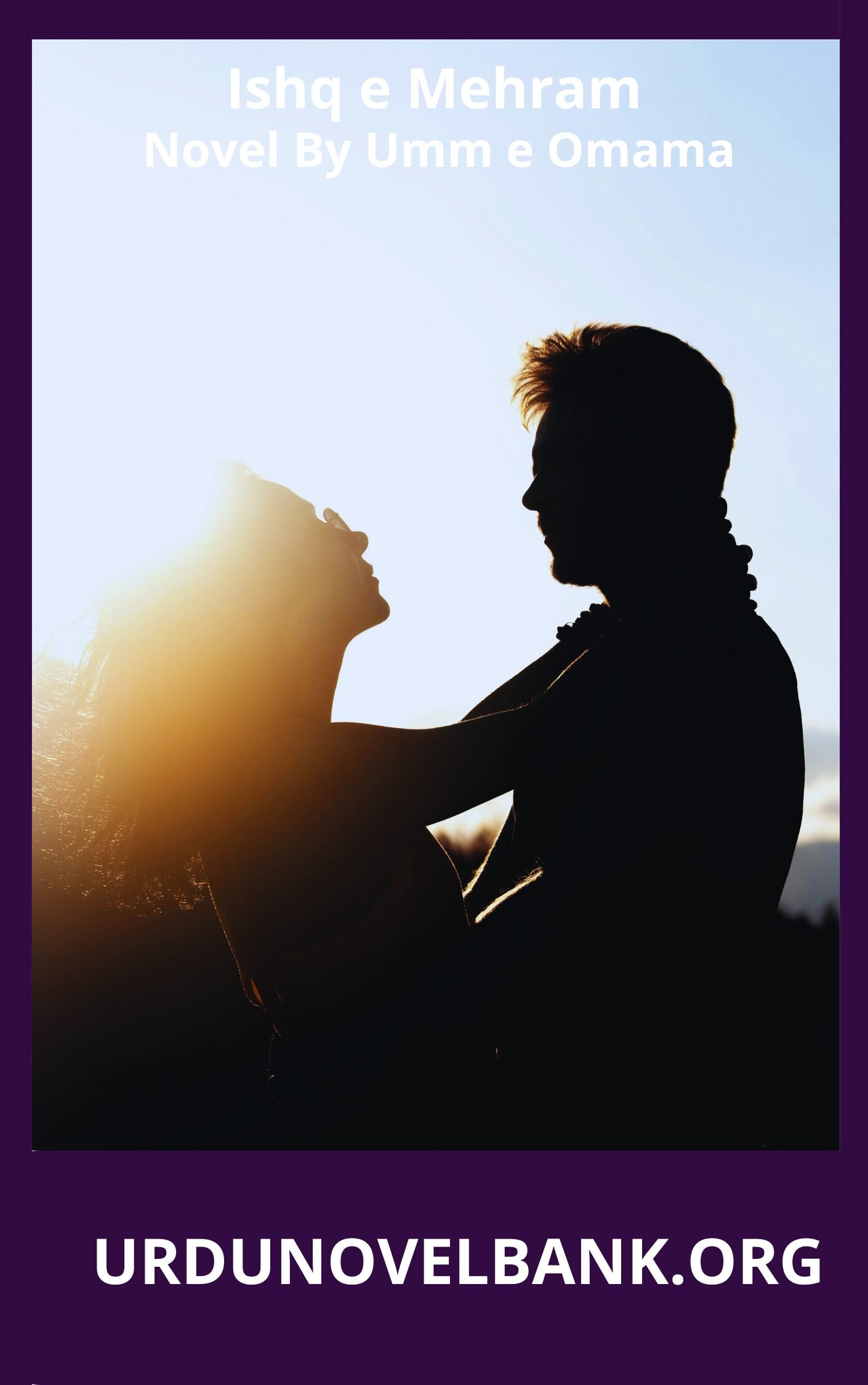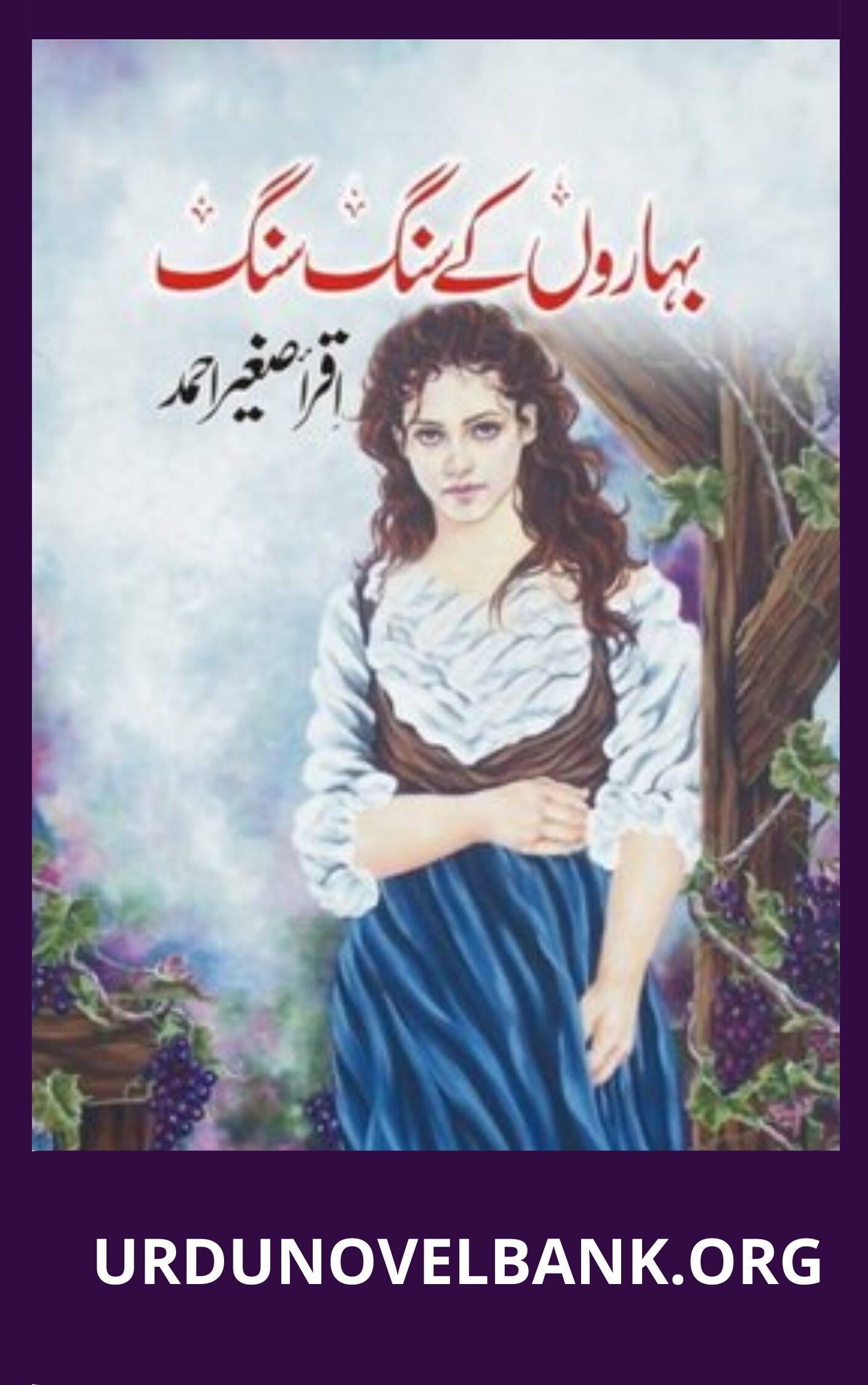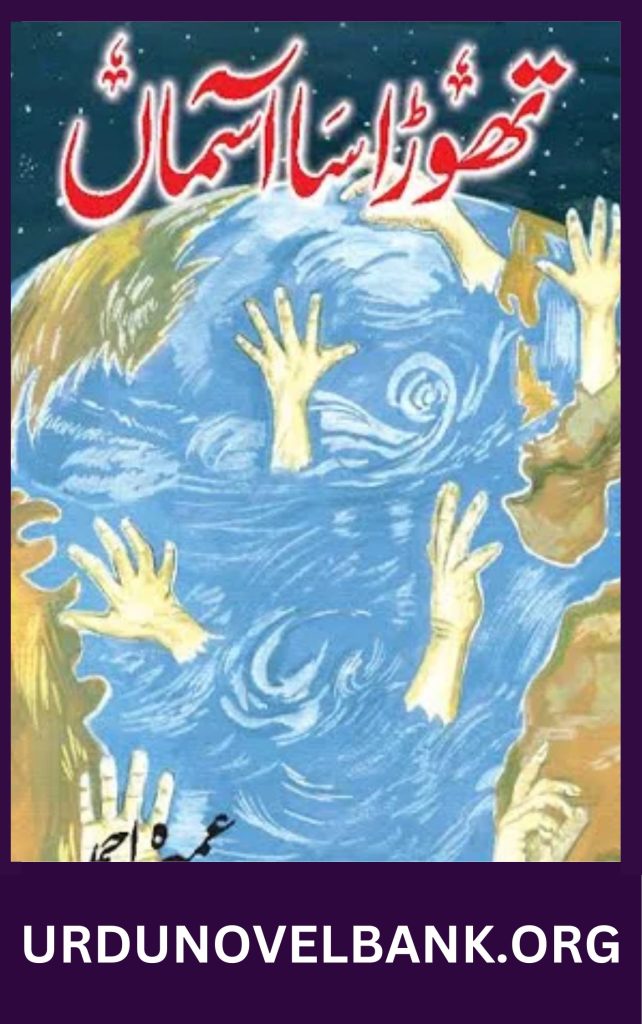
Read Also: Surkh Anchal Novel By Tania Tahir
| Novel Name | Thora Sa Aasman Novel By Umera Ahmed |
| Writer Name | Umera Ahmed |
| File Size | 13.30 MB |
| File Type | PDF Format |
| Download Option | Available |
| Read Online | Available |
Join our WhatsApp channel
“Thora Sa Aasman,” a powerful novel by Umera Ahmed, is a captivating story rooted in Pakistani society. Umera Ahmed, a master of Urdu literature, writes compelling tales. She explores family, sacrifice, and self-discovery. Her work often parallels famous writers, like Bano Qudsia and Ashfaq Ahmed. It blends social issues with intricate character arcs. Many readers find her style similar to some Urdu authors, like Mustansar Hussain Tararr, Hashim Nadeem, and Abdullah Hussein. This shows her impact on Urdu literature. Ahmed’s unique storytelling resonates with readers. So, this novel is a must-read in her collection.
Plot Summary of “Thora Sa Aasman Novel By Umera Ahmed”
“Thora Sa Aasman” tells a story of cultural expectations and personal struggles. In a typical Pakistani society, it follows the protagonist’s struggle to balance family duties with personal desires. In this novel, Umera Ahmed shows how social norms shape characters like Husna, Hayat, and Meerab. She paints a vivid picture of their lives, intertwined by complex relationships.
The novel’s central theme revolves around achieving self-fulfillment while meeting familial expectations. The plot, through the protagonist’s ties to Husna Hussain, reveals a tension. Their interactions with Areej Shah and Suneha Rauf add to it. It is a struggle between societal duties and personal goals. The story presents life-changing choices and a search for identity. Ahmed’s style, like Manto and Qudsia, captivates the reader.
Key Themes in “Thora Sa Aasman”
- Umera Ahmed shows, in Urdu novels, how society’s pressure affects characters. It’s a common theme. This theme reflects on family values, loyalty, and sacrifice. Like Shaukat Siddiqui’s works, it questions social norms’ impact on freedom.
- Inner Conflict and Self-Discovery: The protagonist’s quest for self-discovery will resonate with fans of Pakistani novels. This path is not linear. The character faces dilemmas that test their beliefs. This is similar to themes in Naslain by Abdullah Hussein.
- Faith and Spirituality: Ahmed’s work often weaves religious contemplation within personal struggles. Themes from Surah Al-Baqarah and M.A. Rahat’s novels connect with spiritual readers. Faith plays a critical role in guiding characters through adversity.
Character Analysis
- Protagonist: The main character, often drawn in Umera Ahmed’s style, is multi-dimensional. Their internal conflicts reflect larger societal issues. Their interactions with supporting characters highlight the clash between personal dreams and obligations.
- Supporting Characters: Husna Hussain, Meerab Hayat, and Areej Shah. They influence the protagonist’s choices. They represent different facets of the protagonist’s life. They reflect familial expectations and romantic aspirations. Their unique backgrounds add depth to the plot. It resonates with fans of Farhat Ishtiaq and Qurratulain Hyder’s character development.
Literary Style and Writing Techniques
- Narrative Structure: Umera Ahmed uses a linear narrative that keeps readers engaged. Her approach is direct yet layered, with dialogues revealing character depth.
- Symbolism: Symbols like “Aasman” (sky) represent dreams, freedom, and unreachable aspirations. This symbol appears throughout Ahmed’s works, much like in Taloot’s epic stories.
- Language: The novel’s language is accessible, blending Urdu prose with poetic elements. Ahmed’s language is compared to Mohiuddin Nawab and Iqbal Taloot. It is both eloquent and grounded.
Real-World Relevance of Themes
“Thora Sa Aasman” is more than just a story; it’s a reflection of societal challenges. Ahmed tackles class disparities, justice, and family bonds. This makes the novel relatable to Pakistani readers. Her characters face daily struggles that many know well. This bridges fiction and reality.
Impact and Reception
- Reader Reception: Fans of Umera Ahmed praise “Thora Sa Aasman” for its emotional depth and relatable characters. It has earned a place alongside Urdu classics like those of Razia Butt and Saadat Hassan Manto.
- Critical Acclaim: Critics appreciate the novel’s exploration of human nature. The themes are universal, making it a staple for readers of Urdu literature. Many liken it to Anmol Novel and Taseer-e-Qurbat in terms of cultural impact.
Comparative Analysis with Other Works by Umera Ahmed
- “Peer-e-Kamil” focuses on faith and self-transformation. Unlike “Thora Sa Aasman,” it is not about family. Both novels, however, emphasize the protagonist’s journey toward understanding life’s deeper meanings.
- Meri Zaat Zarra-e-Benishan: This novel shares “Thora Sa Aasman’s” examination of sacrifice. Both showcase Ahmed’s knack for portraying personal conflicts within a cultural framework.
Adaptations and Media
“Thora Sa Aasman” hasn’t had a mainstream adaptation yet, unlike Umera Ahmed’s other novels, like “Humsafar.”” Its relatable characters and narrative structure make it a strong candidate for a Pakistani TV or digital adaptation.
Quotes and Key Passages
- “To reach the sky, one must first conquer the land beneath.”
- This quote captures the essence of personal struggle and resilience.
- “Family is both a gift and a test.”
- This line shows the duality of familial love. It reflects Ahmed’s view of family dynamics.
These passages resonate with readers. They echo sentiments from novels like La Hasil and Taloot.
Conclusion
In “Thora Sa Aasman,” Umera Ahmed explores Pakistani culture, family, and purpose. This novel’s unique storytelling and relatable themes make it a must-read in Urdu literature. Ahmed’s work blends spiritual questions with personal growth. It ranks with Pakistani literary greats like Bano Qudsia, Mustansar Hussain Tararr, and Ashfaq Ahmed. “Thora Sa Aasman” leaves readers pondering life’s big questions. It also shows the strength in family and faith. Ahmed’s novel shows the lasting power of self-discovery and integrity.

- I’m Aliza, the founder of Urdu Novel Bank. I built this site because I love Urdu stories and want everyone to enjoy them. As an Urdu literature lover, I choose the best novels to share with you. Here you can find free Urdu novels in romance, mystery, thriller and more. Read online or download PDF chapters without signing up. I update the library often so you’ll always have new tales to explore. My goal is to bring Urdu literature to readers around the world.
Latest Novels
- December 18, 2025LifestyleResidence Permit in Azerbaijan for foreigners
- December 18, 2025SEO DigitalHow To Offer White Label SEO Services That Deliver Results
- December 18, 2025BusinessWhat To Know About Using Portable Classrooms When Attendance Increases
- December 17, 2025Home ImprovementCreating the Ultimate Reading Escape in Your Garden
